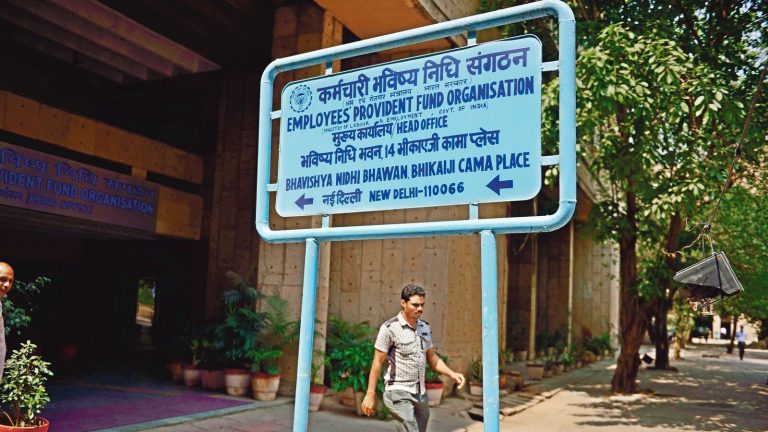Fixed returns are appealing, especially when the rate is higher than that of a fixed deposit (FD). Salaried employees get this from their employee provident fund (EPF), which tends to have a higher rate than FDs, but the interest rate is revised every year (it was fixed at 8.25% for FY25).
Employees contribute 12% of their basic salary to the EPF and the employer matches the contribution. If someone wants to invest more, they can do so through the Voluntary Provident Fund (VPF). In fact, 100% of your basic salary can be invested in EPF and VPF combined. The EPF contribution stays at 12% and the VPF contribution can go up to 88%. The employer, however, only matches the employee’s EPF contribution. The entire sum earns the interest rate set for the financial year (it was 8.25% for both in FY25).
But what about withdrawals? This is where several misconceptions arise.

View Full Image
Differences in EPF, VPF accounting
Let’s illustrate a common misconception with an example. Mr A opted for VPF in 2019 to earn higher interest rate on a part of his savings. He was under the impression that since VPF was voluntary, he could withdraw it whenever he wanted after five years, without any restrictions.
Also read: Faceless tax assessments are a game changer. But there is scope for improvement.
However, this is only partially true. VPF may be voluntary, but withdrawal rules are exactly the same as EPF’s. In fact, the Employee Provident Fund Organisation (EPFO) does not account VPF and EPF separately.
Mr A was thus surprised to find that his PF account only showed him his total balance, which included the VPF contribution, and that he needed to calculate his VPF balance manually.
Moreover, the accounting is different for exempt and non-exempt employers. An exempt employer runs its own trust to manage its employees’ PF contributions under rules defined by the EPFO. The EPFO itself manages contributions in case of non-exempt employers.

View Full Image
For employees of non-exempt employers, the EPF passbook mentions the employee contribution (EPF+VPF) as a single entry, and the employer contribution, interest credit and TDS, if applicable. Employers need to maintain the separate record of EPF and VPF at their end. This is not reported to the EPFO.
Also read: Is gold the GOAT asset of our lifetime?
For employees of exempt employers, EPF and VPF contribution are accounted separately in the financial year they were made, but when the closing balance is carried over to the next financial year, the two are clubbed and into a single entry called ‘employee’s contribution’.
To be sure, from the FY22 onwards, the EPFO has been deducting tax at source (TDS) on interest income at 10% if the annual contribution to EPF+VPF is more than ₹2.5 lakh and the interest is more than ₹5,000, said Sanjay Kesari, regional provident fund commissioner-I (retired), EPFO.
Lock-ins and limits on withdrawals
VPF withdrawal rules are no different from those that govern EPF. There’s a common misconception that VPF has a lock-in period of five years. While you can make partial withdrawals after five years for certain things, such as building, buying or renovating a house, withdrawals for other purposes require you to wait longer. For example, you can make partial withdrawals after seven years for your child’s education, or the wedding of your son, daughter, brother, sister, or yourself. After 10 years, you can withdraw money to pay off a home loan.
Also read: Category III AIFs were created 15 years ago. They still lack clear tax rules.
However, even if you wait this long, you won’t be able to withdraw 100% of the funds in most situations. Certain formulas are applied that reduce the withdrawal limit for various purposes.
So while VPF does offer attractive interest rates, you need to consider the withdrawal rules and the procedure before you commit to it.


